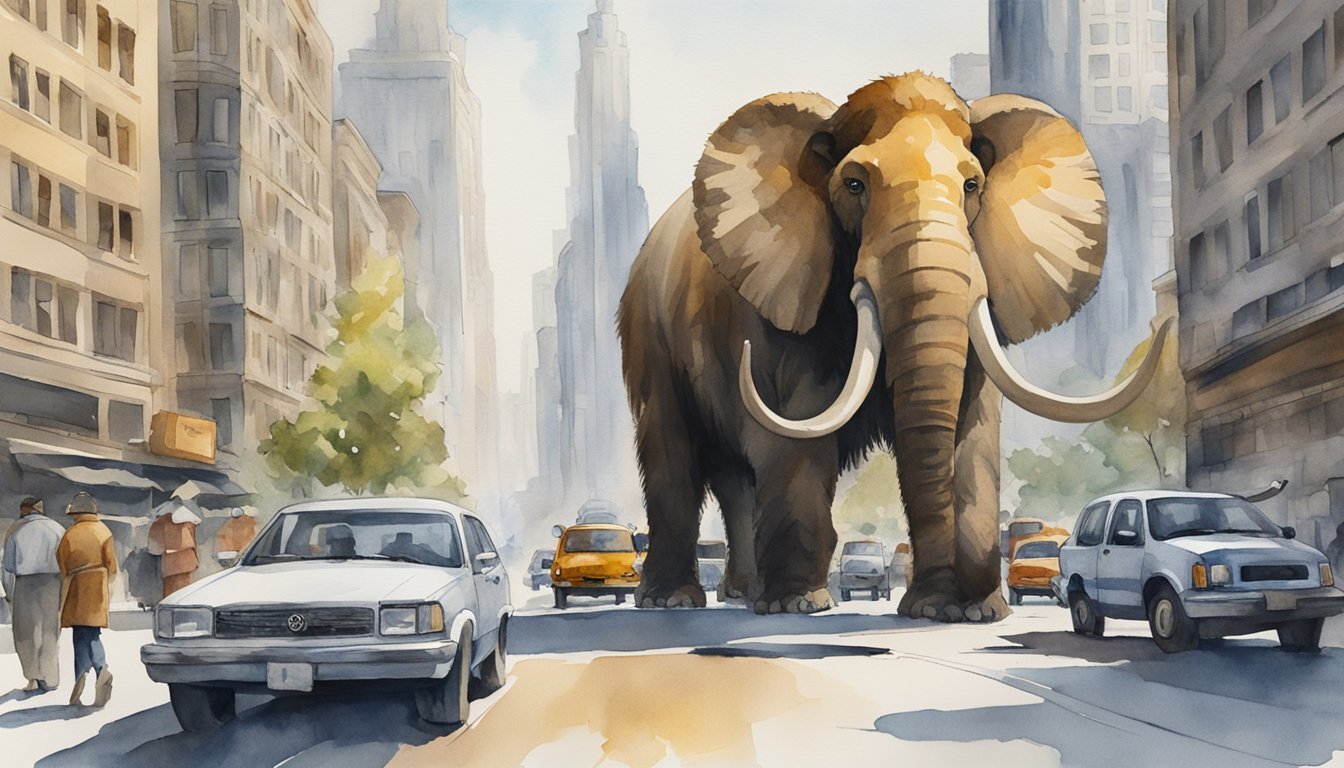Understanding Mammoths
Mammoths, ancient relatives of modern elephants, roamed vast regions of the Earth before their eventual extinction. This section unravels the mysteries of these colossal beasts, exploring their taxonomy, physical characteristics, habitats, diet, extinction reasons, and interactions with humans.
Taxonomy and Evolution
Mammoths belonged to the genus Mammuthus, part of the order Proboscideans, which also includes modern elephants. The evolution of mammoths featured several species, including the South African mammoth (M. africanavus), the steppe mammoth (M. trogontherii), and the most famous woolly mammoth (M. primigenius). Their lineage diverged early from the mastodons, with M. meridionalis identified as one of the earliest mammoth species.
- Major Species:
- M. africanavus – South African mammoth
- M. meridionalis – Southern mammoth
- M. trogontherii – Steppe mammoth
- M. primigenius – Woolly mammoth
- M. columbi – Columbian mammoth
- M. exilis – Pygmy mammoth
Anatomy and Physical Traits
Mammoths generally were massive with long curved tusks, large ears, and a humped shoulder region. The woolly mammoth had thick fur and a layer of fat to insulate against the cold. Their molars had flat surfaces for grinding tough vegetation, differing from the cone-shaped molars of mastodons. The shoulder height of some mammoth species could exceed 4 meters, weighing up to 8 tons.
- Physical Features:
- Ears: Large, similar to modern elephants
- Tusks: Long, curved
- Fur: Woolly in M. primigenius
- Teeth: Flat, grinding molars
- Hump: Pronounced shoulder region
Habitats and Geography
Mammoths were highly adaptable, inhabiting diverse landscapes across North America, Eurasia, and Africa. The woolly mammoth was particularly associated with the Mammoth Steppe, a vast periglacial landscape during the last ice age. Mammoth remains have been found as far north as Wrangel Island and across the Bering Land Bridge into North America.
- Known Habitats:
- The Mammoth Steppe
- North America: From California to the East Coast
- Asia: Siberia
- Europe & Africa
Diet and Behavior
Mammoths were primarily grazers, feeding on a variety of grasses, though some species also browsed on shrubs and trees. The anatomy of their teeth indicates a diet consisting mostly of coarse vegetation. They lived in matriarchal family groups, similar to modern elephants, and their social structure likely played a crucial role in their survival in harsh climates.
- Dietary Patterns:
- Mainly grasses
- Grazing with some browsing
Extinction Factors
The extinction of mammoths is attributed to a combination of climate change at the end of the Ice Age and human hunting pressures. As the climate warmed, their habitats shrank, and human populations became more proficient at hunting these large animals, contributing to their decline. The last known population of woolly mammoths lived on Wrangel Island until about 4,000 years ago.
- Contributing Factors:
- Climate change
- Human hunting
Relationship with Humans
Evidence such as cave paintings, tools, and dwellings suggests that humans interacted with and utilized mammoths for their hides, meat, and bones. In places like ‘The Village’, located in present-day Mammoth Lakes near Los Angeles, people came into contact with mammoths, as indicated by ancient footprints and hunting artifacts. This relationship also underscores the significance of mammoths in human culture and the impact of human activities on their survival.
- Human Interactions:
- Cave paintings
- Utilization of mammoth resources
- Footprints and hunting sites as evidence
Mammoth in the Modern World

The mammoth, though long extinct, continues to make significant contributions in various fields including science, cultural studies, and even tourism. This majestic Ice Age creature, with its unique features and widespread former habitat, offers valuable insights into past ecosystems and has inspired current conservation efforts.
Paleontology and Research
Researchers study mammoths to understand their life history and the environment they lived in. By examining isotopes in mammoth remains, scientists can deduce ancient weather patterns and environmental conditions across different continents, including areas like California and Los Angeles. The woolly mammoth‘s genetic material has been substantially studied, providing an exceptional look into extinct genetics.
Conservation and Legacy
The presence of mammoths in the fossil record of places such as the Eastern Sierra contributes to the area’s rich paleontological heritage. This draws attention to the importance of conservation as the legacy of these extinct giants sparks public interest, inspiring actions to protect existing biodiversity in regions like California’s Mammoth Lakes.
Cultural and Recreational Impact
In the modern world, mammoths have influenced various cultural aspects, especially in adventure and recreation. For instance, Mammoth Mountain and the adjacent town of Mammoth Lakes are named after these colossal creatures, celebrating their historical significance and enriching local folklore.
Infrastructure and Tourism
Mammoth Mountain and the surrounding region have been developed into a tourist hub replete with Mammoth Lodging Collection facilities, trails, and the Village at Mammoth that serves as a gateway to adventure. Infrastructure development like roads and trails has been guided by both the allure of the natural environment and the mystique of its mammoth namesake.
Climate Research and Future Insights
The study of mammoths is essential for climate research, particularly by analyzing isotopes in fossils to uncover past climate conditions. These findings provide a deeper understanding of how climate change has historically impacted species and guide predictions for future ecological shifts.
Artificial Recreation and Resurrection
Intriguingly, some scientists are examining the possibility of resurrecting the woolly mammoth through advanced genetics and cloning techniques. This effort not only represents the cutting edge of scientific endeavor but also poses profound questions regarding the implications of bringing an extinct species back to life and its potential role in contemporary ecosystems.

